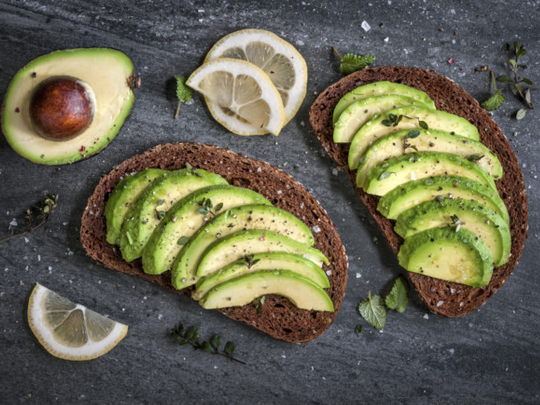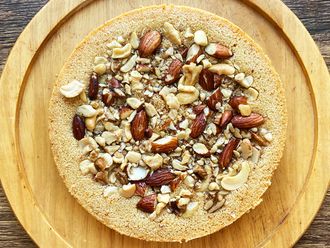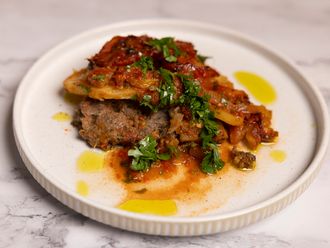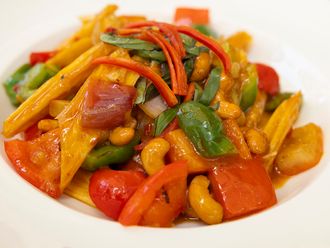
Think back to when you saw your first avocado. If you were born before the advent of Instagram, perhaps it was in the supermarket, exotic and dark and knobbly as a dragon’s egg. Maybe you, or your parents, attempted a chi-chi dinner party some time in the 1980s, and served up halves so hard that, once you had eaten the flaccid prawn cocktail filling, you needed to saw through them with a steak knife.
It seems impossible, now that you can’t go on Instagram without seeing someone’s mushy brunch, but there was a time before everyone was eating avocados. Now, avocado toast is so ubiquitous you can get it in McDonald’s; so mainstream is the green fruit that the fashion world has declared it “overcado”.
But the rest of us, the ones who haven’t heard that the avocado is newly uncool, are only just getting started.
This could become a problem.
An article in the Grocer warns that demand is outstripping supply, which has been made worse because of poor harvests in avocado-producing countries. Reynolds, a leading fruit and vegetable supplier, has seen about 30 per cent growth in demand for avocado in the past year (before, it was growing by about 10 per cent a year). “We have almost unprecedented demand,” says Steve Rudge, the head of procurement. “Normally that wouldn’t be a problem. But we’re coming off the back end of the Peruvian season, and it’s not been a classic season.”
The effect of the El Nino weather pattern has had an impact on the harvest in Peru. “There is terrific demand coupled with what looks like a relatively restricted supply over the next four or five months.” He doesn’t think we’ll necessarily see fewer in the shops, but price could well be affected.
“Over the past three or four years, everywhere around the world that can grow avocados, people are looking to produce them, so we’ve had a lot of new countries come in relatively recently.” Zimbabwe is one example, he says, but “even with new countries coming on board, we’re not catching up quickly enough”.
It could get far worse. In June, Peru was given a licence to export avocados to China. “The Chinese market has only just discovered avocados,” Rudge says. “And Chinese consumption will put even more pressure on world demand.” The rise and rise of the avocado has been extraordinary. In part, it is down to improved deliciousness — a key development has been the improvements suppliers and retailers have made. Avocados arrive in places such as the United Kingdom, hard, unripe and inedible. Like bananas, they reach maturity in ripening facilities (big heated units with ethylene gas) — hence the more expensive “ripe and ready” varieties.
“The skill is to get it to a perfect level of ripeness, and I think we’ve done a much better job over the past two or three years in getting that,” Rudge says. “This speeds up consumption because you’re more likely to buy it again if it is perfect. And you may end up buying more because you’re not leaving it to ripen in the fruit bowl for days.”
In one small fruit, you can see a glimpse of how the modern food industry works — year-round availability, improved retailing, the elevated status of so-called “superfoods”, the influence of social media and millions spent on marketing.
You’ll never guess what “ahuacate” means
The avocado has a long history of being rebranded and marketed. In the early twentieth century, as NPR reports, a group of Californian farmers got together to work out how to take advantage of the blossoming popularity of a new crop they were growing.
People in Central and South America had been eating the ahuacate since at least 500BC, but Americans wouldn’t be able to pronounce that. Its translation — testicle — wasn’t too appetising. Nor was the name alligator pear, which it had become known by. They came up with “avocado”. Californian growers have been funding large advertising campaigns since the early 1960s (the United States market is huge, thanks to clever marketing, the large Hispanic population and growth of “lifestyle” bloggers).
The PR job
In the UK in the 1970s and 1980s, avocados were thought of as a “winter fruit”, sold by Israeli producers. Then South African growers worked together to change perceptions so we would think of the avocado as a year-round food, and to establish a new market. In 1995, they engaged a British PR firm to start a campaign.
Rob Metcalfe, the chief executive of the communications agency Richmond Towers, which ran the campaign, was getting reports of people biting into the tough, green skin and saying it didn’t taste like a pear — they were known as “avocado pears” then. They produced leaflets and recipe booklets and took journalists out to South Africa to visit growers.
“We gradually started talking more and more about the health benefits.” He was also working with retailers to encourage them to display the produce better. “All those things worked pretty well in combination to build the market over the years.”
The campaign was wound up in 2013 (although other countries have their own campaigns and PR agents, including ProHass, Peru’s hass avocado producers’ association). “We didn’t need to do any more, really. Avocados were selling about £13 million (Dh72 million) [worth] in 1995 when we began, and by 2013 it was about £50 million (Dh280 milion).”
Is he some kind of evil genius? He laughs. “It’s one of those really nice opportunities to work on a really good product, with fantastic farmers and growers, that was ripe” — he pauses to apologise for the pun — “for finding a market over here.”
Is avocado really healthy?
Even if we’re not talking about fizzy drinks here, it’s worth keeping in mind the nudges that make us choose to buy what we do. “We usually say most fruit and vegetables are ‘super’, and we shouldn’t paint anything in one light because it can lead consumers to overeat certain food,” says Anna Daniels, a spokeswoman for the British Dietetic Association.
Avocados are nutritious — they contain vitamins E and B, folate, potassium, fibre and some protein. They are, though, quite high in calories, about 190 calories/100g, because of their high fat content — even though most of that is monounsaturated fat, “one of the fats that is supposed to lower cholesterol and raise our ‘good’ cholesterol level”, says Daniels.
Some large avocados, she says, “weigh about 200g, so that’s almost 400 calories and 40g of fat.” The avocado industry has benefited from the decline in the idea that all fat is bad for us, although Daniels points out “saturated fat is still known to raise cholesterol. Avocado still contains some saturated fat — about 4g per 100g.”
Avocados are good for us, she says, “but what you should always be looking at is balance. With the rise of wellness bloggers and Instagram, everyone is adding avocado to their Nutribullet with their tablespoon of coconut oil.”
Adding half an avocado to a smoothie adds about 140 calories. “If you are also adding milk and other fruits, the calories soon add up. It’s not a bad thing for people to be interested in their health, and a bit of avocado on wholegrain toast is a healthy snack, but it’s about making sure it doesn’t become an obsession.”
— Guardian News and Media
















